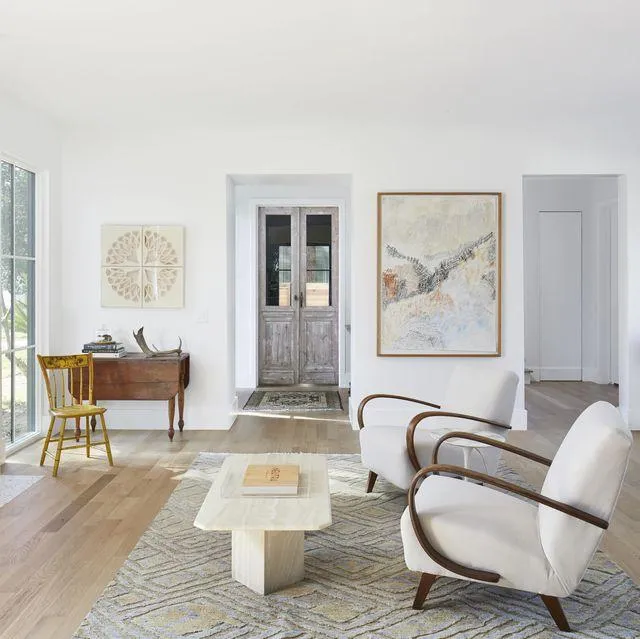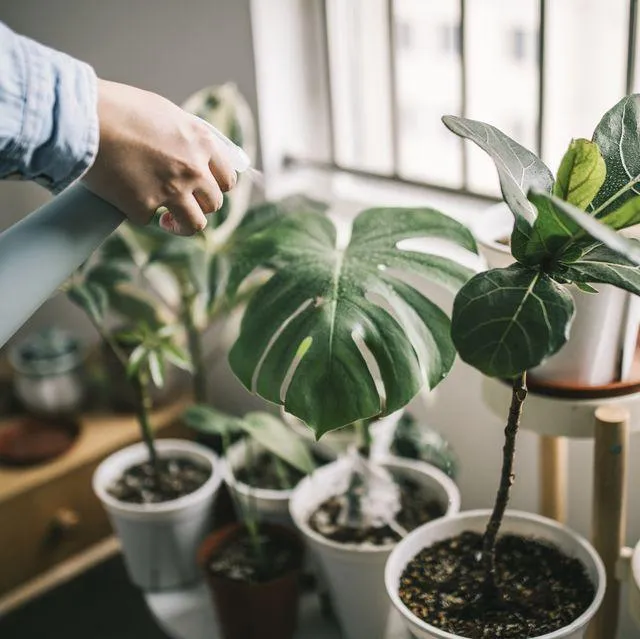All You Need to Know About Using Live Plants for Home Decor
If you’re like me, nothing freshens up a space quite like some green life. Live plants have so many benefits for home decor – they add natural beauty, improve air quality, and even boost mental wellbeing. So if you’re looking for an easy way to liven up your place, plants are totally the way to go.
Different Types of Houseplants
- Low light plants – These hardy guys like pothos or snake plants can survive with barely any sunshine. Perfect for those dark corners most other plants would die in. From my experience, pothos has gotten me out of some tight spots when light was limited.
- Medium light plants – Your classic peace lily or bamboo palm will thrive with just a few hours ofindirect sunlight each day. A south or east facing window is perfect.
- High light plants – These beauties like monsteras, succulents, and spider plants need lots of direct sun every day. A west or southwest window is ideal to keep them happy.
So take stock of the light levels in your home before choosing plants. That way you’ll set them up for success from the get-go. And when starting out, go for some of the more resilient varieties so you don’t kill them right off the bat, like I basically did the first few times!
Where to Place Plants
Once you know the light requirements, it’s time to strategize placement. Think creatively – plants act as nice accents on almost any surface. A few ideas:
- Tables – Group small potted plants on coffee or side tables for a pop of color.
- Shelves – Line open shelves or bookcases with trailing vines or succulents.
- Counters – Mix a potted herb garden onto your kitchen counter for easy access.
- Floors – Use tall peace lilies or palms to define space in large rooms.
- Walls – Try mounting a planter rail or shelving to utilize vertical wall space.
You can even get creative kinda like macramé plant hangers to float pots in a window. Sometimes breaking out of the norm gives you a totally new plant decor vibe. Plus it’s fun to get crazy with the arrangements!
Caring for Houseplants
Once landed in their new homes, plants will need some TLC to stay looking their best. Here are the basics:
Watering – Check soil moisture regularly with your finger. When the top inch is dry, give the plant a thorough drink until water drains out the bottom. Environment and pot material affect water needs, so it takes practice to get the timing right. Overwatering disasters have taught me this lesson the hard way too many times!
Fertilizing – During the active growing season, feed plants monthly with a diluted liquid houseplant fertilizer. Read labels for application instructions. I like to use fish emulsion – it smells awful but the plants go crazy for it.
Pruning – Trim off any dead, diseased or damaged growth to keep plants looking tidy. Some will also benefit from a light shaping now and then. Be warned though – I once took too shears happy with a ficus tree and butchered the poor thing beyond repair!
Repotting – Check roots emerging from the drainage holes as a sign to transplant to a larger pot. Always use fresh potting soil and remove any soggy old roots during the repotting process each spring.
With a bit of care, your new plant bros (or sis’s!) should reward you for seasons to come. Just don’t forget to chat with them now and again – I swear they grow better if you give them some love!
Dealing with Pests
No matter how diligent you are, it’s basically inevitable that pests will sneak into the plant party at some point. Here are some common culprits and solutions:
Spider mites – Tiny spider-like bugs that congregate on leaf undersides. Wash leaves with a mild soap and water solution. No lie, these guys give me the creeps every time!
Scale insects – Armored bugs that suck sap and look like tiny shells attached to leaves. Gently scrape off with your fingernail or cotton ball dipped in rubbing alcohol. Definitely not welcome party crashers.
Mealybugs – Fluffy white masses that hide in nooks and crannies. Wipe exposed bugs with cotton dipped in alcohol. Isolate infected plants until they’re clean to avoid spreading. Nasty little buggers for sure!
Fungus gnats – Swarm tiny black flies around moist soil. Allow topsoil to dry between waterings and spritz with homemade neem oil solution. Kinda funny how they hypnotize you with their erratic flights.
Prevention is key too – clean up fallen leaves, use sterile potting mix, monitor new additions closely. With diligence and the right remedies, pests need not ruin your plant party for long. Just don’t let it stress ya like it sometimes does me!
Adding Finishing Touches
Once plants are happily situated, there are finishing touches that amp up the decor factor:
– Decorative planters – Switch up pots for different seasons or aesthetics. Terra cotta gives that farmhouse vibe.
– Stake outdoor plants – Bamboo or twig supports bring extra height indoors.
– Mulch surfaces – Decorative rocks, moss or pebbles hide bare soil and add visual appeal. Aw man, one time I dumped too much gravel and almost sunk a whole pot under the weight!
– Grouping plants – Place multiples of the same plant together for maximum impact. Or mix textures for visual interest.
– Hanging accessories – Macramé hangers, woven baskets or rattan pots suspend plants beautifully. Wonder if I could hijack my friend’s weaving skills for this…
– Low lighting – Lamps or string lights after dusk bring ambiance without harming leafy friends. Provides nice nighttime illumination too if you’re awkward like me without them.
With these final details, your plantscapes will take the wow factor to a whole new level. Just be careful not to get carried away like my over-enthusiastic self tends to do lol!
I hope these tips have given you some fresh plant parenting insights and ideas to spruce up your space naturally. Houseplants are such an easy and rewarding way to surround yourself with beauty and positivity each day. Now get out there and start shopping – your new green friends are waiting! Let me know if you need any other plant pal advice along the way. Happy decorating!
Choosing Live Plants for Home Decor
| Plant | Light needs | Water needs | Height | Care level |
|---|---|---|---|---|
| Pothos | Low to medium light | Let dry between waterings | Climber or hanging baskets | Easy |
| Philodendron | Low light | Water when top inch of soil is dry | 3-6 feet | Easy |
| Snake plant | Low light | Let dry between waterings | 2-4 feet | Very easy |
| Chinese evergreen | Medium light | Water when top inch is dry | 2-4 feet | Moderate |
| Peace lily | Medium light | Water when top inch is dry | 1-3 feet | Easy |
FAQ
-
How difficult are live plants to care for in the home?
Caring for live plants at home isn’t too hard. It basically requires watering them regularly and making sure they get enough sunlight. At the same time, some plants may be more difficult than others depending on their needs. Nevertheless, many people find live plants rewarding additions to any space.
-
What kinds of plants work well for interior decor?
There are lots of plant options that do pretty good inside your home. Some popular choices are things like peace lilies, pothos, snake plants, and English ivy. These can survive in lower light spots and don’t basically need a ton of care. Spider plants are also apparently amazing for removing toxins from the air. However, you’d be amazed at how many other kinds of plants can work too once you start looking around.
-
How often should houseplants be watered?
Most houseplants will need water every 7-10 days, but the schedule can vary depending on things like the plant type, pot size, and conditions. As a general rule, stick your finger an inch or two into the soil and water when the top soil becomes dry. Maybe try different schedules for different plants to see what seems to work best for each one. After all, is there really a single right answer for every plant?
-
Is it hard to care for plants when traveling?
Caring for plants when you’re away from home can certainly present some difficulties. But these days there are some clever options to help out. Automated watering systems, for instance, can keep plants well watered without having to bother friends/family. Stunningly, some plants are quite resilient and may go a couple weeks between waterings. So short trips need not doom your plants! With a little planning, green thumbs don’t have to turn brown while traveling.
-
Which plants help improve indoor air quality?
Some plants are said to be amazing at removing toxins and purifying the air in our homes. NASA studies found plants like English Ivy, Bamboo Palm, and Peace Lily to be sort of stellar air cleaners. Spider Plants and Dracaena also get high marks for gobbling up nasty chemicals and contaminants. Honestly though, having any live plants around vs none seems to make a difference. So even easy care pothos or succulents lend their natural air cleaning skills.
-
What’s the best way to care for plants while on vacation?
When going away for a longer trip, you’ll want a plan to keep your plants watered and happy while you’re gone. Automated watering systems are an option, or you can recruit plant-loving friends/family to help out. In a pinch, you may also be able to go longer between waterings for some tougher plants. Pebbles and water in a tray can also help tropicals stay hydrated without constant care. Basically, with a bit of preparation your green buddies can greet you gratefully upon your return.
-
Are succulents and cacti good starter plants?
Succulents and cacti are often suggested as good starter plants due to their adaptability and low water needs. These plants don’t require a lot of fuss, and can bounce back from mistakes rather than turning brown immediately. Their interesting shapes and textures also make them stunning decor additions! While a black thumb won’t doom them as fast as other options, these plants still deserve light and occasional water. So is starting with succulents a great way to gain confidence caring for greenery? I’d say quite possibly!
-
What are some good low-light houseplants?
If high light spots are scarce, luckily there are fine plant choices that thrive with less. Spider plants, pothos, philodendrons and snake plants tolerate quite low light well while remaining neat and verdant decor. Peace lilies and Chinese evergreens also do sort of okay in dim conditions. Of course, these plants won’t reach their full potential without more sunlight, but they remain green when light is limited. So don’t despair if windows are scarce – plenty of lovely leafy friends will grow.



